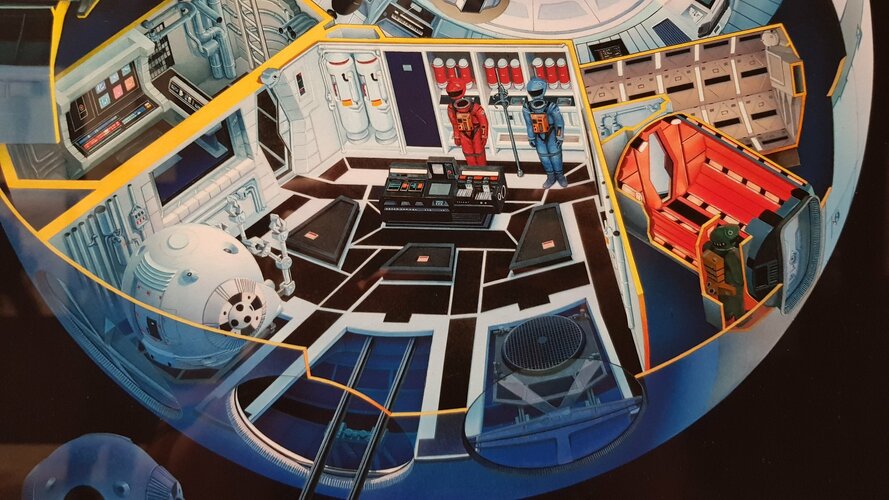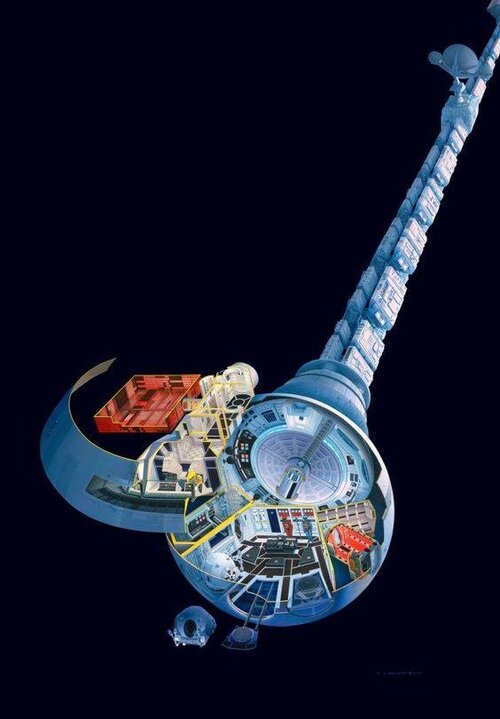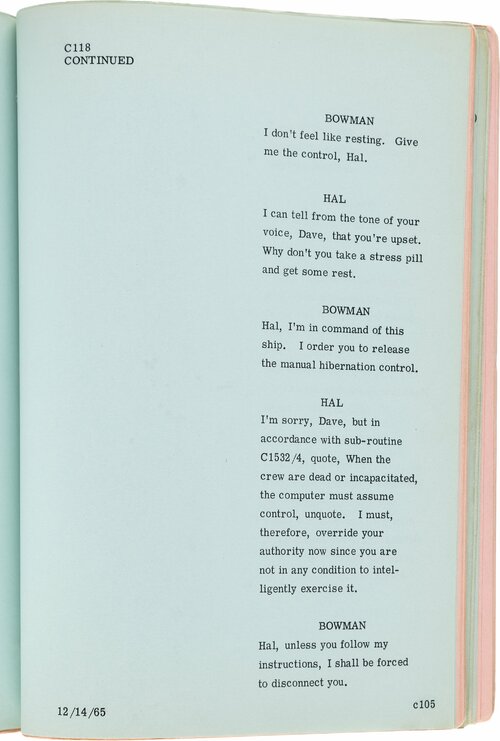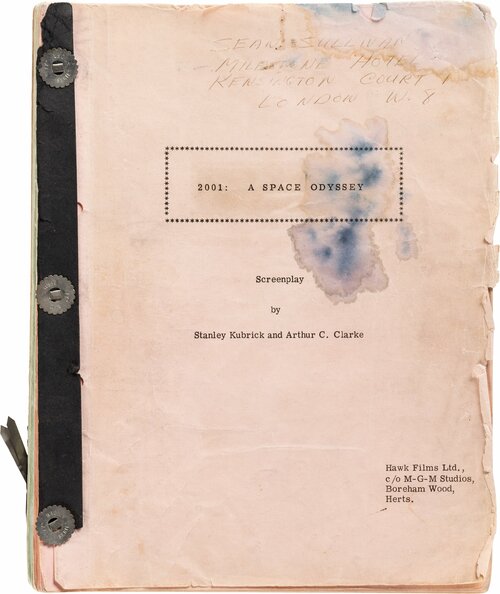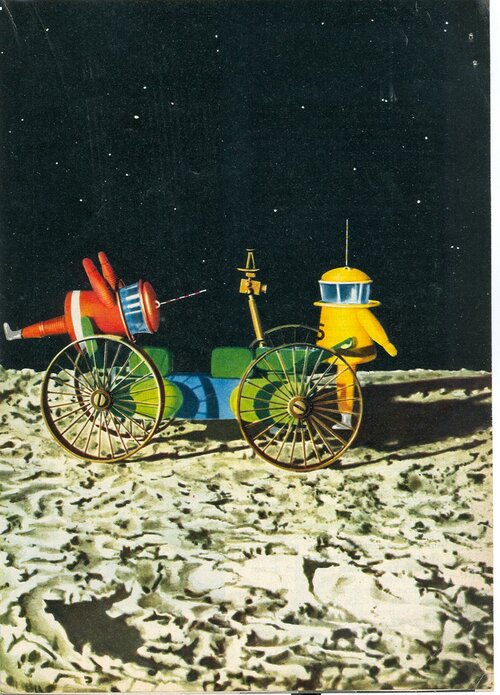I red the novel first, when I turned 19 in May... 2001. I love the novel as it stands, and I love the movie as well. Digging that further, I loved the novel because it expanded Heywood Floyd trip as seen in the movie. More Orion III, more Ares 1B, more Space Station V. What's not to like ?
...
Clarke made clear he wasn't writting a novelization of Kubrick movie, this for a simple reason: the movie wasn't finished when he was writting the novel. They were very much parallel creations that actually diverged significantly along the way. As Clarke explained a few years down the road in "The lost worlds of 2001". He also wrote an "update" in the fall of 1982 (thing it was related to 2010, the novel) - noting that it was 18 years from 1964 when he started writing, and 18 years left before... 2001 for real.
Remember that in the novel, the second monolith ends right in the middle of Iapetus "eye", around Saturn - that actually exists and was imaged by the Voyagers a decade after. As it happened at JPL, Carl Sagan couldn't resist: spotting a little black dot in the "eye", he send the picture to Clarke; "thinking about you", said the caption.
Kubrick nixed Saturn from the movie because he felt SFX couldn't render the rings in any satisfying way. Despite the Trumbulls, father and son, strongly disagreeing. This led to another movie a few years later: Silent running, complete with Saturn and its rings.
The lost worlds of 2001 is a very good, fascinating reading: also often hilarious. Clarke had a few quirks, Kubrick had a few others, and then Hollywood swamp on top of this... funny things happened.
Fun fact: 2001 and Contact are related, through science advisor Carl Sagan. As for Contact and Interstellar, they are related through Linda Obst and... Matthew McConaughey. Funny to think Cooper ancestor was Ellie Arroway boyfriend, in better times.
I wish somebody could make a DVD package of all three movies.
...
Clarke made clear he wasn't writting a novelization of Kubrick movie, this for a simple reason: the movie wasn't finished when he was writting the novel. They were very much parallel creations that actually diverged significantly along the way. As Clarke explained a few years down the road in "The lost worlds of 2001". He also wrote an "update" in the fall of 1982 (thing it was related to 2010, the novel) - noting that it was 18 years from 1964 when he started writing, and 18 years left before... 2001 for real.
Remember that in the novel, the second monolith ends right in the middle of Iapetus "eye", around Saturn - that actually exists and was imaged by the Voyagers a decade after. As it happened at JPL, Carl Sagan couldn't resist: spotting a little black dot in the "eye", he send the picture to Clarke; "thinking about you", said the caption.
Kubrick nixed Saturn from the movie because he felt SFX couldn't render the rings in any satisfying way. Despite the Trumbulls, father and son, strongly disagreeing. This led to another movie a few years later: Silent running, complete with Saturn and its rings.
The lost worlds of 2001 is a very good, fascinating reading: also often hilarious. Clarke had a few quirks, Kubrick had a few others, and then Hollywood swamp on top of this... funny things happened.
Fun fact: 2001 and Contact are related, through science advisor Carl Sagan. As for Contact and Interstellar, they are related through Linda Obst and... Matthew McConaughey. Funny to think Cooper ancestor was Ellie Arroway boyfriend, in better times.
I wish somebody could make a DVD package of all three movies.
Last edited:





